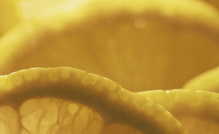
Recipes
Trifle
An adaptation of a recipe in a 1677 manuscript
This is the earliest sort of trifle, really a rich spicy junket. It emerged in the 16th century, though the first recipes do not appear until the following century. Ginger was sometimes used as an alternative to cinnamon and mace. Trifles like this were often scattered with coloured sugar comfits.
Ingredients
- 20 fluid oz of single cream
- 3 tablespoons white sugar
- 1 cinnamon stick
- 1 blade of mace
- 2 tablespoons of rosewater
- 1 tablespoon of rennet essence
- Put the cream, spices and sugar in a milk pan and simmer on a gentle heat for five minutes, stirring continuously. Be careful not to allow the milk to boil, or the bottom of the pan to burn.
- Leave to cool. When the cream has cooled down to 37ºC/99°F, remove the spices and put into a shallow glass bowl.
- Quickly stir in the rennet essence and leave in a cool place to set.
Lemon syllabub
Adapted from The Experienced English Housekeeper, Elizabeth Raffald (London 1769)
This is a type of whip syllabub, a popular summer refreshment of late Stuart and Georgian times, which eventually got replaced by ice cream. It was served in beautiful glasses and could be bought over the counter from most confectioner's shops.
Ingredients
- 10 fluid oz of white whine
- 10 fluid oz of whipping cream
- 2 oz of sugar lumps
- 1 lemon
Method
- Rub the lump sugar on the lemon to flavour the sugar with the essence.
- Mix the wine, cream, flavoured sugar lumps and the juice of the lemons in a bowl. Stir for a few minutes and leave for two hours.
- Whisk the mixture with a balloon whisk and carefully skim off the bubbles with a spoon, putting them into a large non-metallic sieve.
- Continue the process until the sieve is well covered with foam. Leave overnight to drain.
- Meanwhile put the remainder of the liquid into glasses, filling them up to about three-quarters.
- In the morning, carefully float the drained foam on top of the liquid and serve.
Trifle
From The Experienced English Housekeeper, Elizabeth Raffald (London 1769)
By the middle of the 18th century, the trifle had become a complex confection of wine-soaked biscuit, topped with custard, syllabub and a scattering of comfits. In fact, all the major foods of the dessert course served up in one dish. The following is Elizabeth Raffald's recipe in her own words. It uses a syllabub topping made from the recipe above.
To make a trifle
Put three large macaroons in the middle of your dish, pour as much white wine over them as they will drink, then take a quart of cream, put in as much sugar as will make it sweet, nib your sugar upon the rind of a lemon to fetch out the essence, put your cream into a pot, mill it to a strong froth, lay as much froth upon a sieve as will fill the dish you intend to put your trifle in, put the remainder of your cream into a tossing pan, with a stick of cinnamon, the yolks of four eggs well beat, and sugar to your taste, set them over a gentle fire, stir it one way till it is thick, then take it off the fire, pour it upon your macaroons, when it is cold put on your frothed cream, lay round it different coloured sweetmeats, and small shot comfits in, and figures or flowers.
Further reading
The Pleasures of the Table
Ivan Day and Peter Brown, York Civic Trust
Eat, Drink and be Merry
edited by Ivan Day, Merrell-Holberton
Meet the chef
Ivan Day has been interested in the history of food since he stumbled across a copy of John Nott's 1723 Cook's and Confectioner's Dictionary in an antiquarian bookshop at the age of 13.
He has since collected early cookery books and equipment as well as systematically learning most of the techniques and methods of the period confectioner.
Ivan has given numerous lectures and demonstrations, runs courses in the authentic preparation of period food and works a great deal as an advisor to museums and exhibitions.
Rate and Review
Rate this activity
Review this activity
Log into OpenLearn to leave reviews and join in the conversation.
Activity reviews